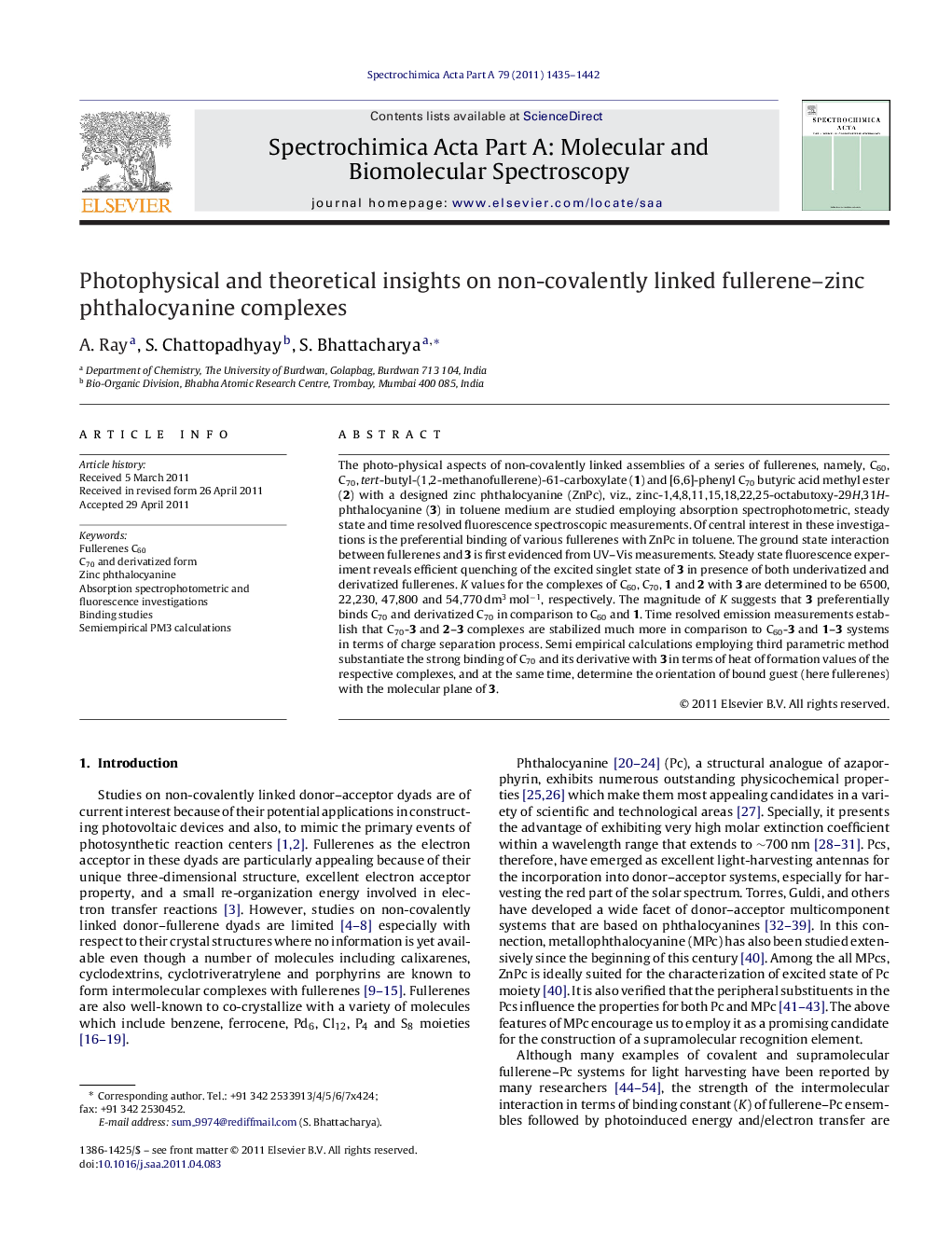| Article ID | Journal | Published Year | Pages | File Type |
|---|---|---|---|---|
| 1236544 | Spectrochimica Acta Part A: Molecular and Biomolecular Spectroscopy | 2011 | 8 Pages |
The photo-physical aspects of non-covalently linked assemblies of a series of fullerenes, namely, C60, C70, tert-butyl-(1,2-methanofullerene)-61-carboxylate (1) and [6,6]-phenyl C70 butyric acid methyl ester (2) with a designed zinc phthalocyanine (ZnPc), viz., zinc-1,4,8,11,15,18,22,25-octabutoxy-29H,31H-phthalocyanine (3) in toluene medium are studied employing absorption spectrophotometric, steady state and time resolved fluorescence spectroscopic measurements. Of central interest in these investigations is the preferential binding of various fullerenes with ZnPc in toluene. The ground state interaction between fullerenes and 3 is first evidenced from UV–Vis measurements. Steady state fluorescence experiment reveals efficient quenching of the excited singlet state of 3 in presence of both underivatized and derivatized fullerenes. K values for the complexes of C60, C70, 1 and 2 with 3 are determined to be 6500, 22,230, 47,800 and 54,770 dm3 mol−1, respectively. The magnitude of K suggests that 3 preferentially binds C70 and derivatized C70 in comparison to C60 and 1. Time resolved emission measurements establish that C70-3 and 2–3 complexes are stabilized much more in comparison to C60-3 and 1–3 systems in terms of charge separation process. Semi empirical calculations employing third parametric method substantiate the strong binding of C70 and its derivative with 3 in terms of heat of formation values of the respective complexes, and at the same time, determine the orientation of bound guest (here fullerenes) with the molecular plane of 3.
Graphical abstractFigure optionsDownload full-size imageDownload as PowerPoint slideHighlights► The present article introduces a newly designed Zn-phthalocyanine (ZnPc) molecule, 3. ► For the first time, derivatized fullerene/3 non-covalent interaction is studied in solution. ► 3 serves as an effective molecular tweezers for C70 in solution. ► Binding of fullerenes with 3 is clearly demonstrated by PM3 calculations.
